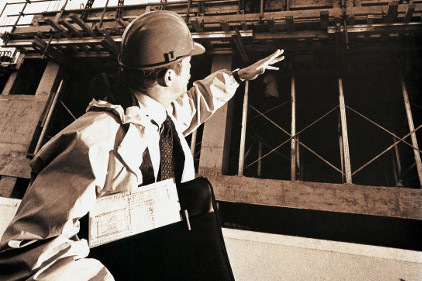Tips to Negotiating Claims with Adjusters
The best way to begin negotiating claims with adjusters is to begin at home, with ourselves.
 Adjusters really take a bum rap! The common picture contractors paint of most adjusters is that they don’t know the technical standards of our industry, that they are just trying to save a buck so they reduce our charges at will, and they always side against the contractor in favor of the customer. Most contractors have little good to say about the adjusters they work with!
Adjusters really take a bum rap! The common picture contractors paint of most adjusters is that they don’t know the technical standards of our industry, that they are just trying to save a buck so they reduce our charges at will, and they always side against the contractor in favor of the customer. Most contractors have little good to say about the adjusters they work with!
Adjusters are people trying to do a job, just like you and me. They’re honest people trying to follow the guidelines set by their carrier and do the best they can. Though there is the occasional exception to the rule, we contractors have a few of those of our own.
The best way to begin negotiating claims with adjusters is to begin at home, with ourselves. If we do our jobs well, the need to negotiate will be minimal.
Know the Carriers Guidelines for Estimating
Every carrier has certain estimating preferences or requirements. They are not right and wrong, they are just preferences they choose to follow and seem right from the carrier’s vantage point. Carriers prefer square foot pricing for a drywall patch rather than using the patch line item. They prefer the graphical estimating feature of “drop and fill” allowing Xactimate to figure flooring waste rather than the estimator entering a manual waste figure. They want contractors to use one coat of paint on a painted wall, and two coats on fresh drywall rather than always charging for two coats. There are standards that each carrier uses to eliminate waste, prevent over-charging, and provide uniformity to their estimating practices. You should know what your carriers want, and give it to them.
Document Everything
Both mitigation and construction contractors should have supporting photos for every line item the estimate contains. Every piece of drying equipment set in place should be identifiable in photos; every room requiring baseboard to be replaced should be documented; damaged countertops; and plumbing that needs to be serviced should each have one or more photos showing the extent of damage.
Whatever damage we assess should be documented and made available for the adjuster’s review.
Damaged cabinets, furniture, flooring or any high value item should be documented and maintained on site for inspection by the adjuster. Adjusters oftentimes want to see the damaged material and be able to justify repair costs to their supervisors, just as your crew must do to you.
Negotiating with the Adjuster
As you can imagine if you have followed carrier guidelines, adhered to industry technical standards and documented everything needing repair, there is little room for disagreement. Doing our work well will make any final negotiations much simpler and less adverse.
If you need to negotiate stay calm, listen with understanding and if you can say “yes,” don’t say “no.” If you can comply with the wishes of the adjuster, then do so. Show the adjuster you are a team player and a professional colleague. Build relationships for the long haul. It all might come back to benefit you in the end.
What do you do when you just plain believe the adjuster is wrong? Are adjusters sometimes wrong? Do they sometimes fail to understand or adhere to industry guidelines? Does their inexperience sometimes shine through the veneer of outer confidence? Yes, sometimes any of these instances could be true. This does not justify lowering the boom on them for a mistake, misunderstanding or some other failure.
Start with clarifying the carrier guidelines together, present your case based upon industry technical standards. Not all adjusters are up on the latest standards, guidelines or best practices, and so this may be an opportunity to teach and increase their understanding of our industry. Review your written and digital documentation together. Suggest alternatives and solutions that may be acceptable as an alternative or compromise to each of you.
If you are still at an impasse and cannot reach common ground, refer the matter to a supervisor for final determination. Oftentimes the supervisor will make a quick decision in your favor, or may ask for further clarification, in which case you can start again from the beginning.
Don’t coach the customer in what to say or do in an attempt to force the carrier into compliance. The matter of coverage is ultimately one between the carrier and their policyholder. Contractor coaching pits the policyholder against the carrier. No one likes to be ganged up on and this 2-against-1 will feel exactly like that. Offer your most sound advice and let the two parties decide how to proceed.
Most of the items over which we negotiate are relatively minor. As a large program contractor I made it a practice never to argue with adjusters, or with customers. Rarely was I unfairly treated, but it did happen from time to time. There is much to be gained by negotiating an outcome acceptable to both, even if it requires compromise, than drawing a line in the sand and refusing to budge.
In the end, we are each just people trying to do our jobs as best we can. Disagreements will occur from time to time and negotiating may be required during those times. The goal should be reaching an agreement, not winning a fight. If we take steps forward to meet an adjuster in the middle, negotiating may lead to winning, for each of us. Isn’t that where we want to end up anyway? Each of us winning?
Looking for a reprint of this article?
From high-res PDFs to custom plaques, order your copy today!





